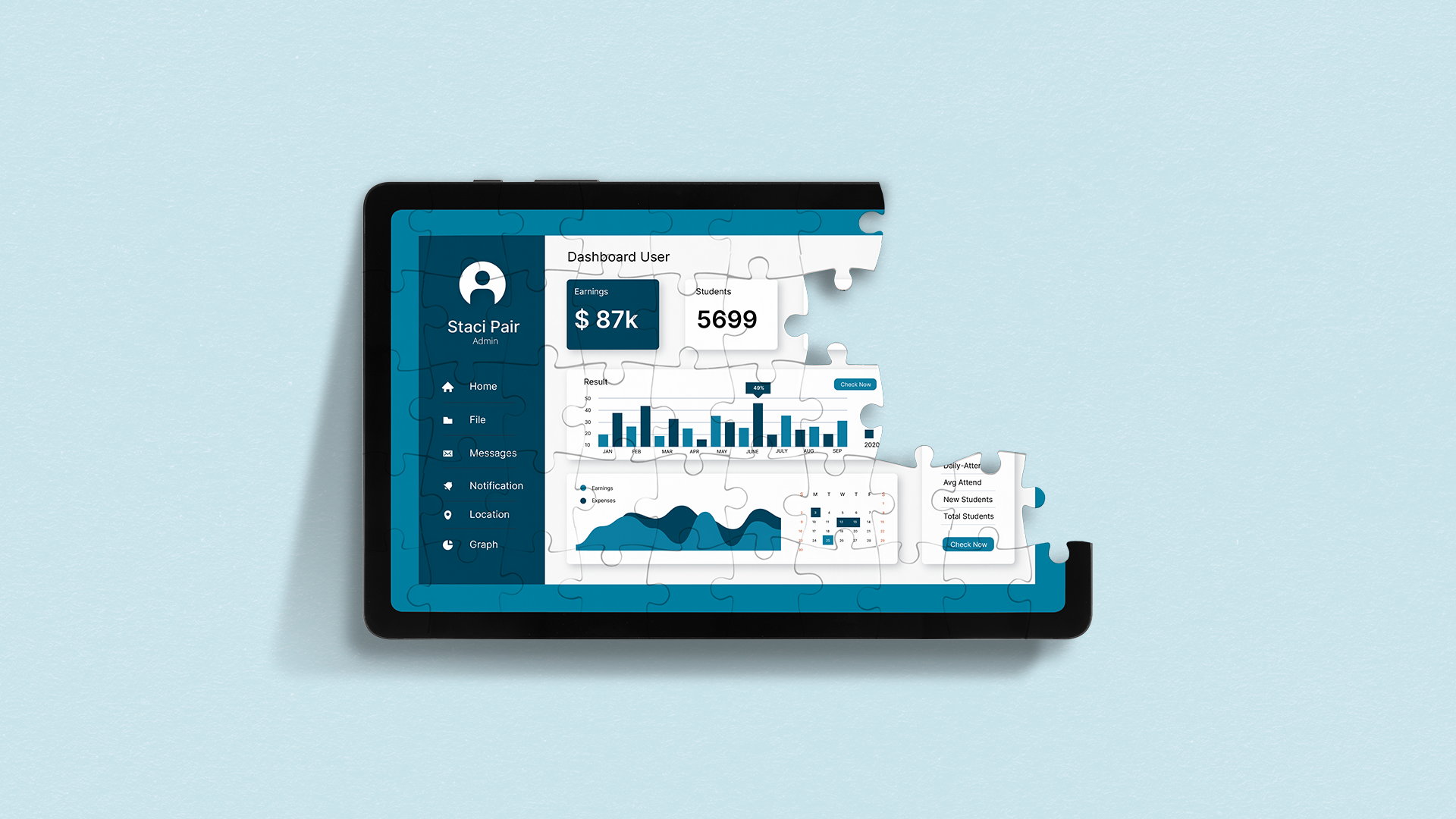As traditional universities continue their slow recovery from the pandemic’s impact on enrollment, community colleges and modular, stackable credentials are meeting the changing needs of learners and industry and seeing unprecedented growth.
Key Benefits Driving Demand for Stackable Credentials
In Spring 2025, community colleges—public 2-year and Primarily Associate Degree-Granting Baccalaureate Institutions (PAB)—saw enrollment increases of 5.4%. Traditional institutions, on the other hand, saw an average enrollment increase of 2.5% over the prior year.
Undergraduate certificate programs increased by 4.8% (now 20% higher than in 2020), with community colleges accounting for nearly ⅔ of that growth. In fact, the combined number of associate’s degrees and non-degree certifications has almost matched the number of bachelor’s degrees conferred.
This growth really comes as no surprise. Community colleges and non-degree certifications share several benefits that are of particularly high importance to 21st century learners.
- Affordability: Generally have lower tuition costs and fees compared to four-year universities.
- Accessibility: Often offer flexible scheduling, including in-person, virtual, hybrid, evening, asynchronous and online courses.
- Reduced Time Commitment: Courses/certifications are shorter in duration; no need to commit to a full degree program but may offer scaffolding into degrees
- Alignment with Workforce and Employer Needs: Address local skill gaps; easily updated to reflect changing industry needs. Can be co-developed and offered with industry backing.
- Higher Completion Rates: Learners are more likely to finish certificate programs than standalone courses, thanks to clear goals and the motivational boost of stacked, career-aligned credentials.
- Career Advancement: Support up-skilling/continuing education for adult learners.
How Institutions Can Scale Stackable Credential Offerings
Institutions will need to find ways of scaling stackable credits in order to maximize access and deliver the kind of learning pathways today’s students prefer. As the demand for and value of non-degree certifications continues to increase, here are some strategies that institutions can deploy to enter or grow their non-degree offerings.
Modularize Existing Programs for Flexibility and Access
Modularize Programs into Manageable Content
Break down existing degree and diploma programs into discrete content modules. This allows universities to create manageable, shorter, and cheaper entry points for learners to gain employment-relevant skills. These modules can be stacked into short courses that further build into higher qualifications, like degree programs. Modules also give universities the flexibility to curate custom learning portfolios for workforce training and corporate partnerships.
Design Transparent, Personalized Learning Pathways
Map out clear learning pathways to help learners connect incremental credentials to degrees, employment, and/or career advancement. This helps a learner understand how their credential fits into the university learning ecosystem. Regularly review and update pathways based on student outcomes and shifting labor market needs. Deploy AI to offer personalized pathway building for learners as their needs evolve.
Collaborate with Employers to Ensure Market Relevance
Consider working with employers and other industry leaders to ensure new credentials match current and future workforce needs and to develop work-based learning opportunities. Additionally, offering courses to multiple industry partners generates a new enrollment stream of employees seeking upskilling. Co-branded offerings can offer further validation for market relevance and may serve as an entry point into deeper employee training programs.
Deliver Credentials Through Flexible Formats and Support Services
Offer stackable credentials in flexible formats (asynchronous, online, hybrid, in-person) to reach underserved communities, working adults, and nontraditional learners. Provide support services to help learners develop and progress through their credential pathways at their own pace. Consider how AI can help augment personalized support at scale.
Institutional Shifts Needed to Support Credential Innovation
Align Faculty, Staff, and Employers Around Shared Goals
Clarify definitions, value propositions, and objectives to help build alignment among faculty, staff, employers, and students. Faculty often have close ties to industry partners and recent graduates that can offer valuable insight into the latest trends. Create cross-functional development teams—including academic leaders, student services, employer partners, and community organizations—to guide implementation and continuous improvement.
Bridge the Gap Between Credit and Noncredit Programs
Divisions within and across educational institutions can negatively affect the portability and transferability of credits/credentials and complicate learning pathways, as does lack of alignment between credit and noncredit programs. Thinking holistically across the institution creates opportunities to align to workplace skills and deploy resources more efficiently.
Standardize and Digitize Credentials for Portability
Implement digital credentials and badges to verify and document course completion and skills development which can be easily shared with employers to build trust. Advocate for new or updated industry-recognized standards to ensure portability and recognition. Consider industry partnerships as a meaningful way to stay at the cutting edge of workforce skills requirements.
Communicate Value and Stackability Clearly to Learners
Both new and lifelong learners require clear, accessible information about which credentials are available, how they stack, and their value in the labor market. Ensure content on marketing sites and catalogs is continuously and consistently refreshed. Deploy AI strategically to help answer learner questions and act as a wayfinder for learners overwhelmed with choices.
Use Data Lakes to Track Learner Progress and Outcomes
Institutions must implement tracking systems to monitor which students are stacking credentials, where they are in their learning pathway, and their success rates/employment outcomes. Understanding the entirety of the student profile enables universities to better recognize the student’s needs and how they might evolve over time. Implementation of data lakes can help create a more holistic picture both individually and in aggregate.
Address Funding and Staffing Challenges Through Strategic Partnerships
Program development and instructional resources quickly eat up funding, as does hiring additional faculty and staff to design, implement, and maintain stackable credential pathways. Strategic outsourcing in this area can reduce costs and labor requirements.
Proven Models of Stackable Credential Success
The overlap in benefits and mission has enabled community colleges to become leaders in credential innovation and pathway development. Here are some notable examples:
Washington’s Unified System for Credential Portability
The Washington State Board is pioneering accessible and transferrable education. Their Common Course Numbering system standardizes course names across their 34 community and technical colleges and is backed with digital credentials and badges – easing transfers to 4-year colleges with easily verified credentials. Other innovative initiatives challenge traditional ways of teaching and create pathways for learners of all types to access education and support professional development. For example, I-BEST classes teach literacy and college-readiness alongside job-training with a dual instructor model – enabling students to move through school and study for a career simultaneously.
North Carolina’s Adult Learner-Focused Reconnect Initiative
The North Carolina Community College System has built a multi-stakeholder network to support adult learners’ access to affordable education and job training through the NC Reconnect initiative. NC Reconnect works to re-engage adult students with some college credit but no graduating credential to overcome barriers to degree completion. This includes affordable and flexible credentials and dedicated support created with a deep understanding of the adult learner. Schools in the system also partner closely with local industry to create work-based learning opportunities and to train specifically on high-demand skills, creating a direct pipeline for adult learners into regional employers.
New Jersey’s Workforce-Aligned NJ Pathways Program
A collaboration between New Jersey’s Community Colleges and the New Jersey Business and Industry Association, NJ Pathways provides students with pathways to upskill and reskill into areas where there are critical labor market needs. These stackable credential pathways offer a variety of on-ramps and off-ramps from high school to community college to 4 year colleges to workforce training and apprenticeships, enabling learners a fully flexible option to curate learning as their job and life allows.
National Programs Promoting Stackable Learning Models
National reform efforts such as Achieving the Dream and Completion by Design promote the adoption of guided pathways, stackable credentials, and competency-based education. These efforts have led to more integrated, student-centered models that support progression, completion, and upward mobility.
Lead the Stackable Credential Movement
Modular, stackable credentials open up a new era of learning where programs prepare students for the workforce, up-skill them as industries evolve, and continuously adapt to the demands of a rapidly changing job market. Shared missions and benefits uniquely position community colleges to lead the growth of these non-degree programs, bridging the gap between classroom theory and real-world application. If your institution needs to step up its undergraduate certificate game, the learning designers at Noodle have the expertise, tools, and products to earn your school its Scaling Stackable Credentials badge.
Let’s Talk.


